Want to spice up your Indonesia trip with a fine funeral? Then the land of Toraja might be your destination. Nestled in the mountains half way between Makassar and the Togian Islands, Tana Toraja is one of Sulawesi’s most fascinating travel highlights. Odd as it may sound, funerals are a main reason people visit.
Funerals, cliff burial sites and Tongkonans – those striking traditional houses with dramatically curved roofs – are the hallmarks of Toraja culture. All of it is set within a stunning mountainous landscape.
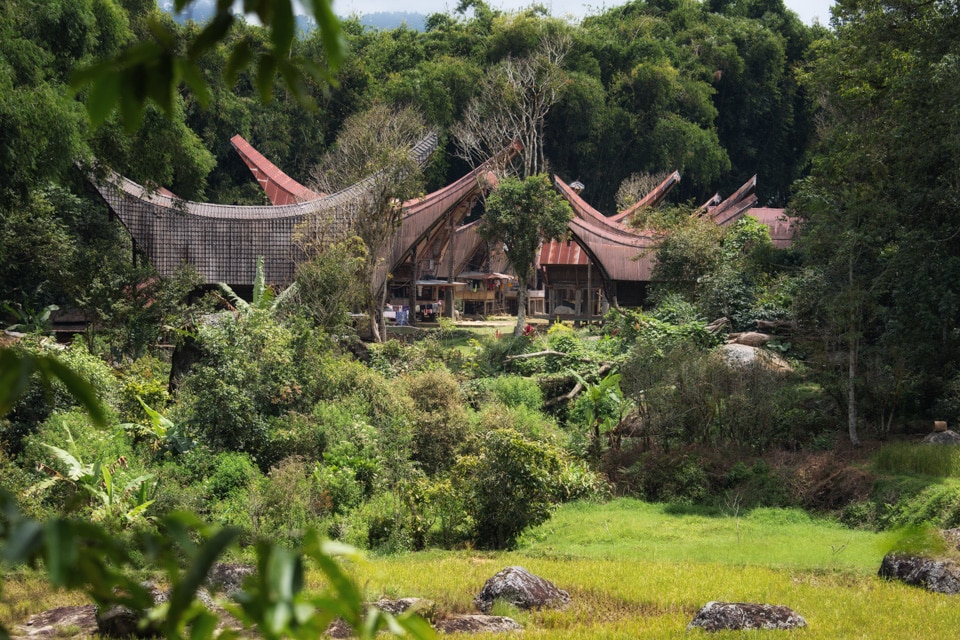
On average, people stay for three days, hire a local guide, attend a funeral on one day, and explore the area on the other two. Their impressions will be intense and also puzzling. While the guide may answer many questions, the overall picture often remains blurred. The desire to understand this vastly different world remains unfulfilled.
This is why my friend Lisa Soba, who works as a local guide, and I decided to write a book about the cultural context of Torajan life and rituals. Before my first trip to Tana Toraja in 2015, I searched for such a book – but to no avail. All I found were anthropological surveys and scientific publications that were rather difficult to read. I made my way through one of them and wondered: why had no one written something more accessible? So, we did it ourselves.

Our book is titled “Toraja Culture”. A preview is available in my books section.
How it began
In 2015 my son and I stayed in Maruang Tongkonan, arranged by Lisa. It wasn’t a guesthouse in any usual sense – just a traditional Tongkonan that stood empty, and the family had agreed to let us stay there. No one in the family spoke English, nor did we understand Bahasa Indonesia at that time. Still, simply observing the everday life of the local people was a wonderful experience.
And then there was Gonna.
Gonna was about four years old and lived together with her mother in the lower part of the Tongkonan. Each day, when we returned from our excursions and relaxed on the veranda, she would jump on my lap and urge me to show her the photos of the day. Exitedly, she woulde hop up and down and comment incessantly on all the images she saw – never concerned that I might not understand a single word.
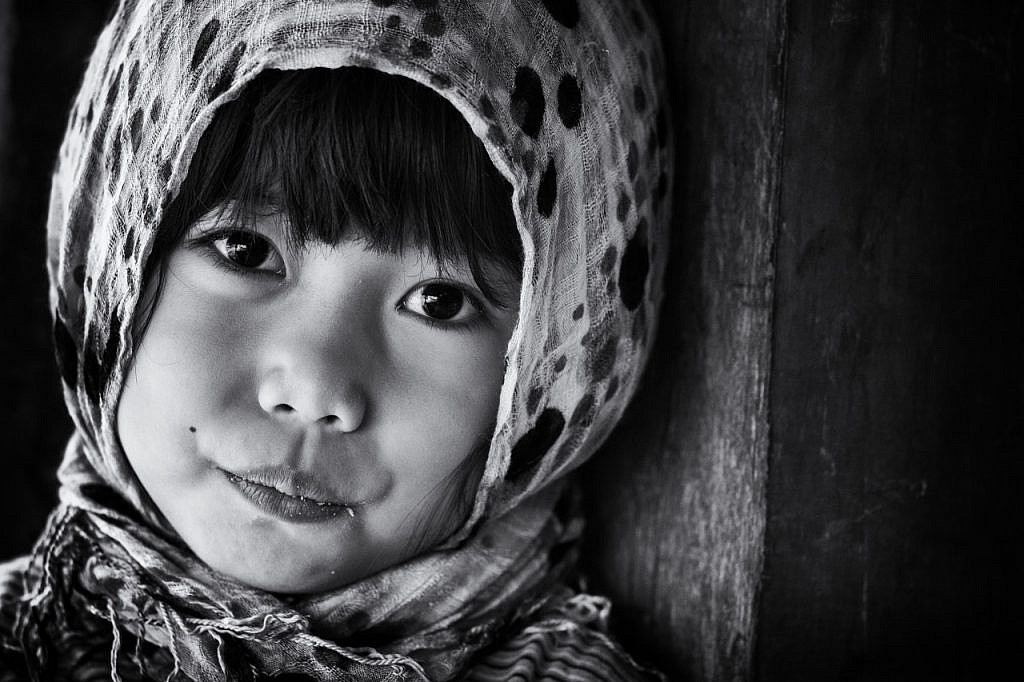
Her enthusiasm became my inspiration. I wanted to learn more about this unique Torajan culture. So I returned, and with Lisa’s help, made new experiences and gained deeper insights. The idea for the book was born – and Gonna became our cover model.
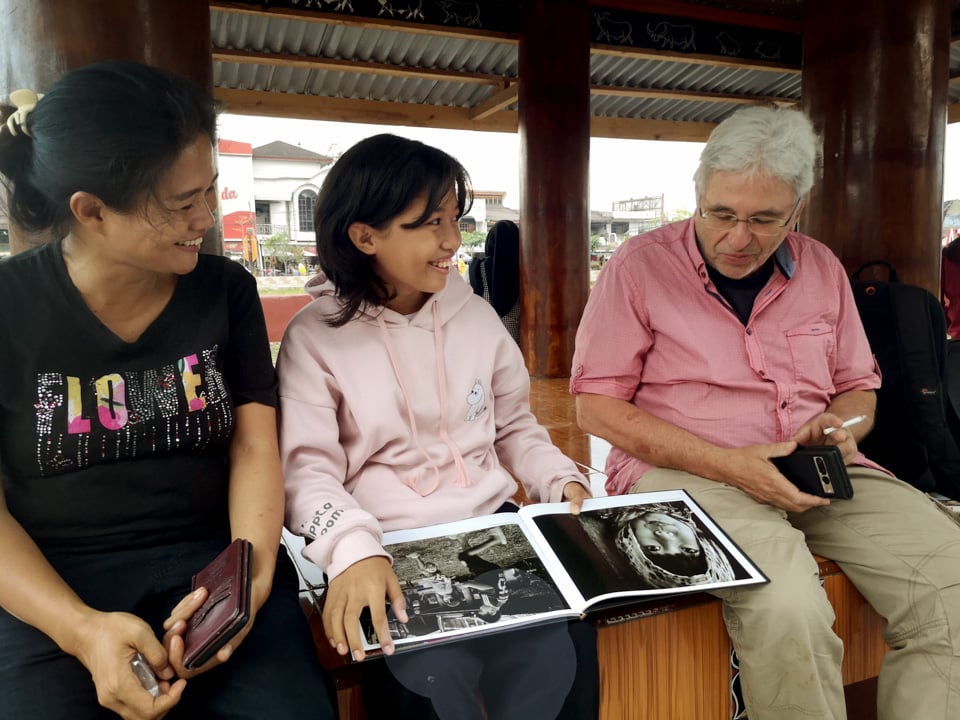
After all the work was finally done (and the dreadful years of the Covid pandemic had passed), 1,000 copies were printed in Yogyakarta and brought by us to Rantepao.
Now it was time to see Gonna again. But what a change! The wild child had grown into a shy but lovely young lady. It was indeed a touching moment, sitting with her and her mother, browsing the pages until she discovered her beautiful portrait from years ago.
Toraja Culture
There are three key features of Torajan culture that every visitor will likely encounter: Tongkonan houses, cliff burial sites, and funerals. The link between all three is the importance of ancestors in every aspect of Torajan life.
Tongkonan
The Tongkonan is the traditional home of Torajan people – and more importantly, the home of all ancestors of a family.
Each Tongkonan has its own name, and just as people are related, so are Tongkonans. When Lisa and I visited Kale Landorundun, the Tongkonan in this photo, the family leader gave us a warm welcome and explained that Lisa was a dear relative. But he could not remember Lisa’s name.
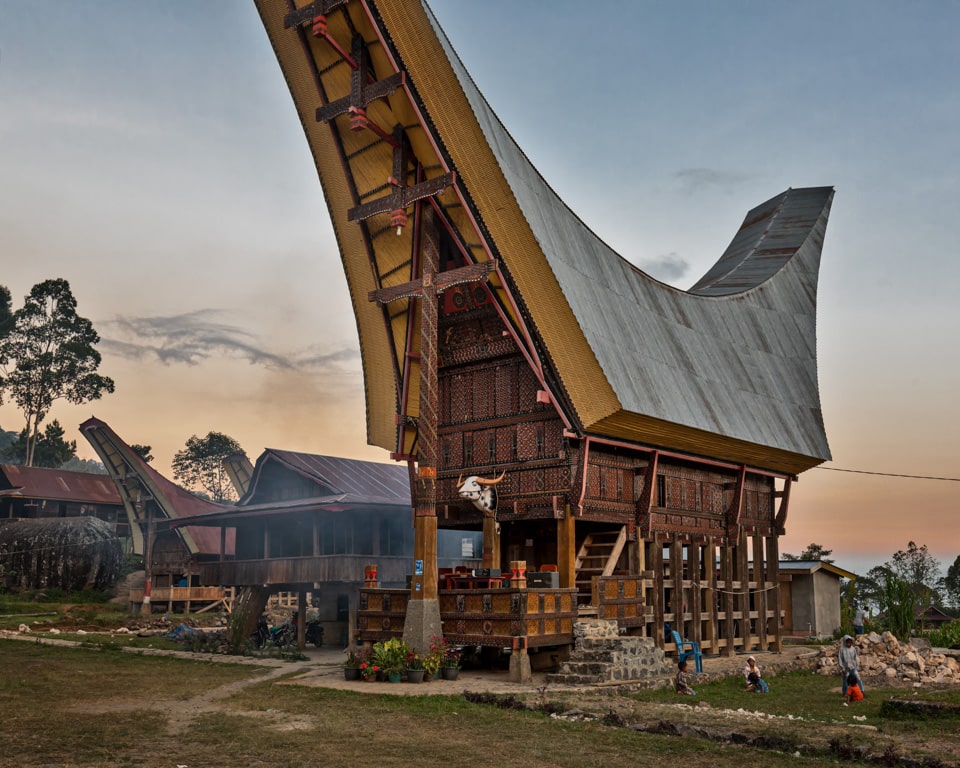
Or maybe he had never known it. For what matters is the close relation between their respective Tongkonans. The houses are like nodes in the network of Toraja social relations, a network that includes both the living as well as all their ancestors.
Death…
Toraja culture does not focus on death itself, as it may seem to the outsider, but on ancestors. They may dwell in Puya – the southern land of spirits – or may from there have reached Christian heaven (the majority of Torajans today are Christians). Still, part of their spirit remains here, in union with the living.
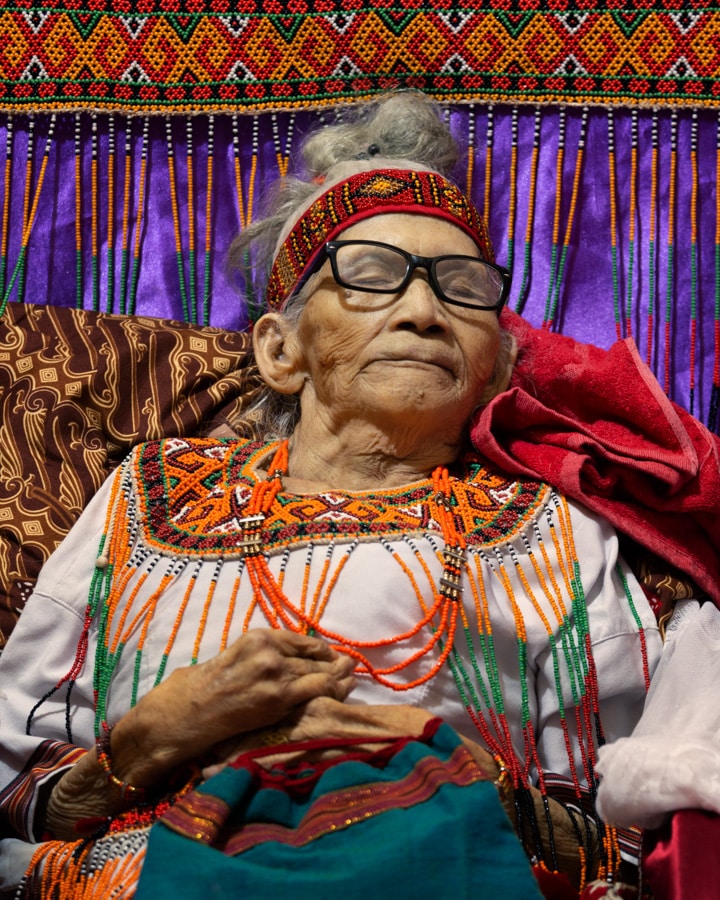
The grandmother of Kale Landorundun had passed away the previous night. Lisa recieved this information because of the affiliation between his Tongkonan and theirs. I was allowed to take photos. Arriving at sunset after a long drive, we were greeted with a cup of warm tea. I looked around. Children played outside the impressive Tongkonan house, men chatted under the rice barn. Everything seemed normal.
Then we were signalled to climb the stairs of the Tongkonan. Inside the dimly lit room, a group of women dressed in black sat on the floor. In front of them was a kind of stage, where the deceased grandmother sat in a decorated armchair, finely dressed in traditional Toraja costume, handbag on her knees, glasses on her face. At first glance, she seemed alive. And i clearly was not the only one who thought so – as her daughter began speaking to her, introducing the foreigner “who travelled so far to take a photo of you, Mom.”
…and funerals
After death, the body of a deceased person is mumified – and remains in the house! For weeks, months, or even years. During this time, the deceased is not considered fully dead but in a transitional state. Relatives will speak to the deceased just as if alive. Final death is marked by a funeral ceremony, when the deceased departs southward to Puya, the realm of spirits.
Lavish funerals are what Toraja is most renowned for. Most last three days, some whole week. I will not go into details here, as funerals are part of most guided tours and you might already have witnessed one (or are planing to do so). Each day hundreds or more guests will flock in at the funeral site, and tourists are just as welcome as anybody else. A large number of attendees enhances a family’s reputation, and, as we describe in our book, in Toraja society prestige matters greatly.
Here is an image of the authors of “Toraja Culture” at a funeral in Rantepao 2015.
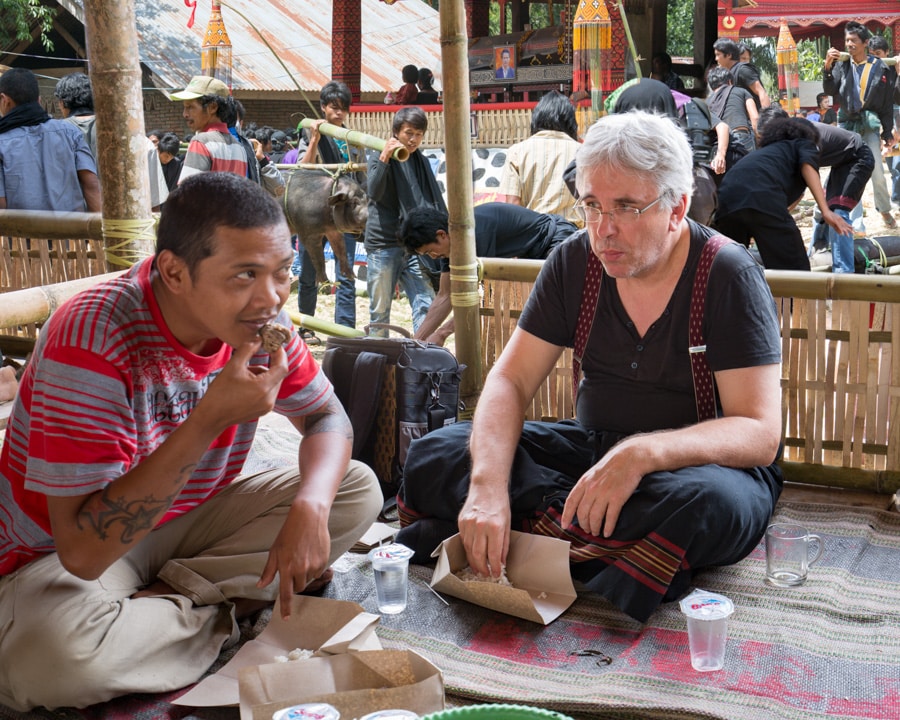
Burial sites and Tau-Tau
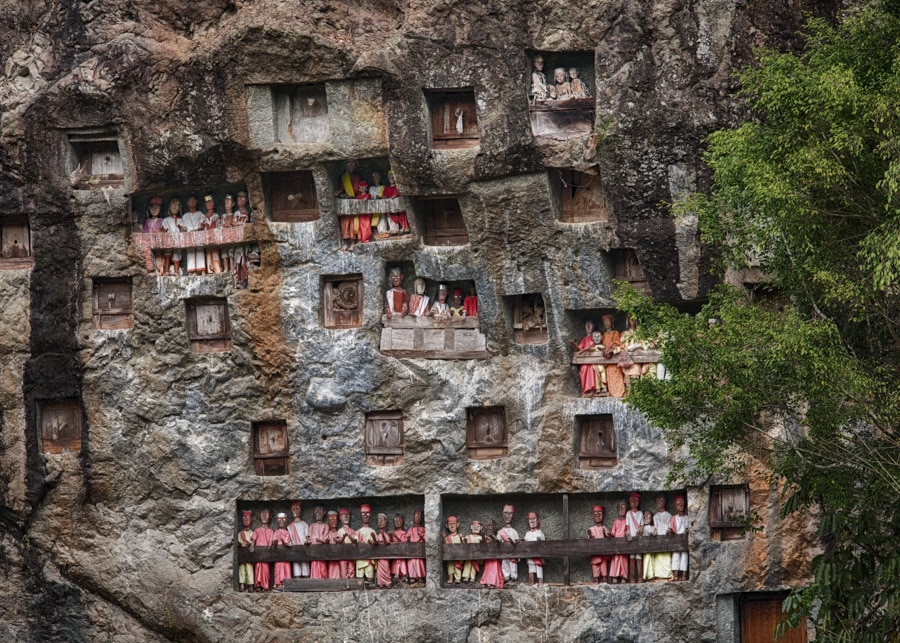
An image of the burial cliff at Lemo sparked my fascination with Toraja even before my first visit. I imagined an early explorer emerging from the jungle and standing spellbound before this awe inspiring scene. And maybe he felt a shiver run down his spine as the ancestors stared back at him, unblinking.
Even today, as Lemo is easily accessible, the Lemo’s cliffs and their Tau-Tau are amazing. Tau-Tau are wooden effigies of ancestors interred in the rock. Tau-Tau are believed to hold part of the spirit of the deceased. Torajans visit them, talk to them, bring cigarettes or money – tokens of care. (I suppose cigarettes are not harmful once you are dead.)
But wait – didn’t I say most Torajans are Christians? How does this practice fit to the Christian belief? The church once said it didn’t. Priests refused to attend funerals featuring Tau-Tau. But Torajans, as one priest told me, “are very stubborn people”. Debates followed, Torajan leaders pointed out that even in Europe photos were displayed at funerals. And wasn’t this adat, their cultural tradition? Hadn’t the Indonesian Government encouraged all ethnic groups to preserve their adat, true to the state motto ‘Unity in Diversity’? The church leaders relented.
Power, prestige and culture
What I have described so far is what is generally considered as Toraja culture. But this oversimplifies in at least three ways:
- Rituals vary significantly between villages, especially between south and north Toraja.
- Historically, Toraja society was hierarchical: a ruling upper class of nobles who derived their prestige from a long list of ancestors, a middle class of free people, and on the lower end a class of enslaved people. Adorned Tongkonans, lavish funerals and Tau-Tau were privileges of the upper class. Times have changed: slavery is gone and with the rise of money, power and prestige are shifting. Today many people identify with this Torajan culture, even though historically they did not have access to its features.
- The elements described are only the frontstage so to say. There is a backstage, too, hidden from the visitors view, which enables the “show” and puts it into a much wider perspective. This backstage is what we try to explore in the second part of our book
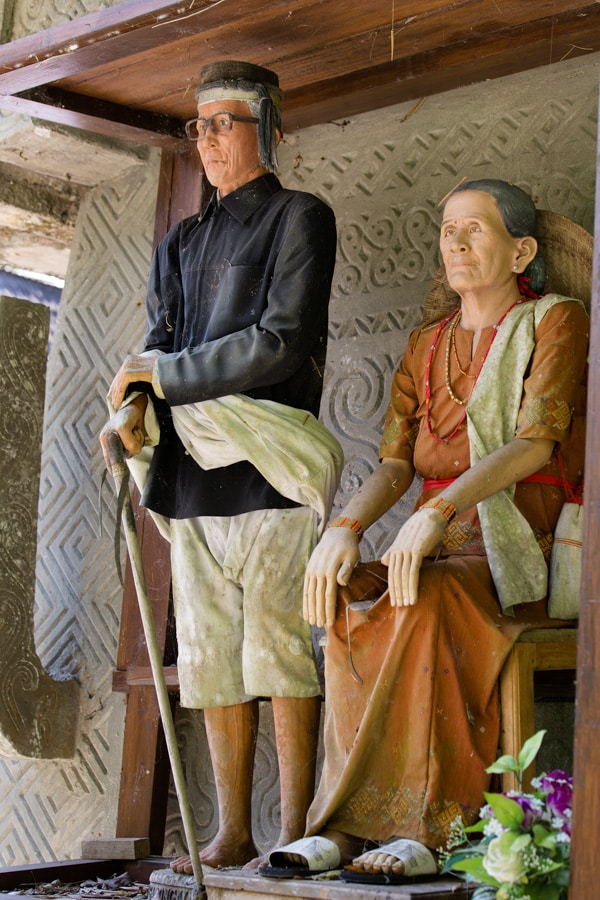
Aluk to dolo – path of the ancestors
Tradition, or adat, comes into being through the shared believes and practices of a society. In other words: through a religion. In the case of the Toraja people, this is aluk to dolo, which roughly translates to “path of the ancestors”. Aluk is what originally gave meaning to adat. However, Aluk has now widely disappeared, superseded by Christianity to the brink of extinction. Still the Toraja rituals are very much alive, but there is a real chance that the tradition could become folklore. And some rituals are not quite as alive as others…
Rambu tuka’ and rambu solo’
Torajans distinguish between two different sets of rituals, those performed while the sun is rising (rambu tuka’) versus those while it is sinking (rambu solo’). The latter, associated with death, like funerals, are the ones that visitors are most likely to witness. Funerals are large events that bring a lot of prestige to the family, and the Christian church has come to accept them as local adat to a much larger degree than is the case for rambu tuka’ rituals.
Rambu tuka’ rituals are often much smaller and performed in secret. They pertain to the many different spirits that enliven nature, the crops and the animals. In Aluk belief, it is important to give them recognition and a fair share of food. The spirits of the ancestors, the spirits of nature, and the spirits of humans all have to be kept in a delicate balance.
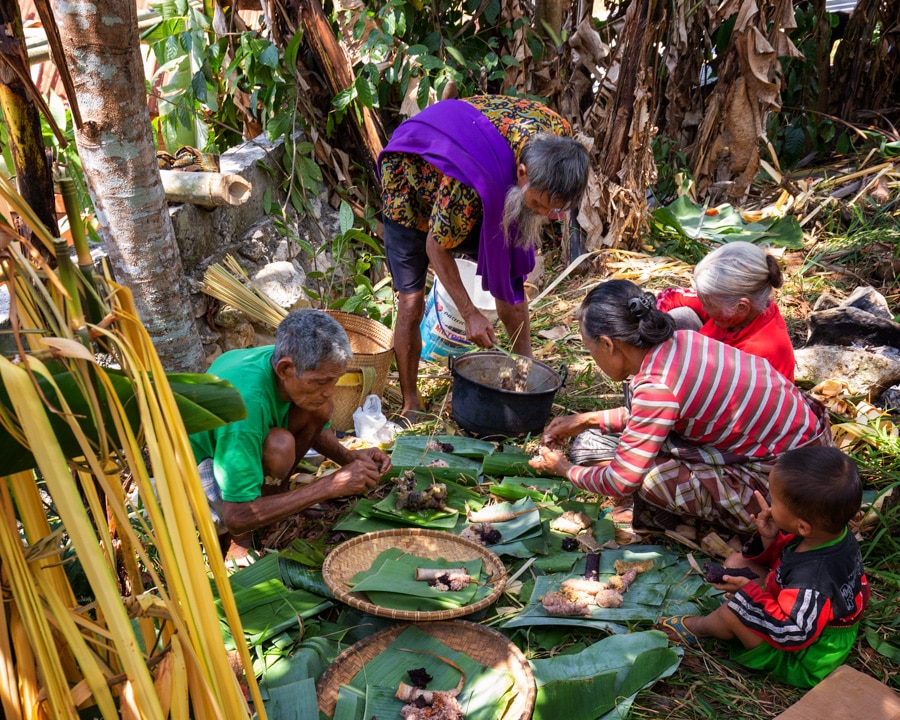
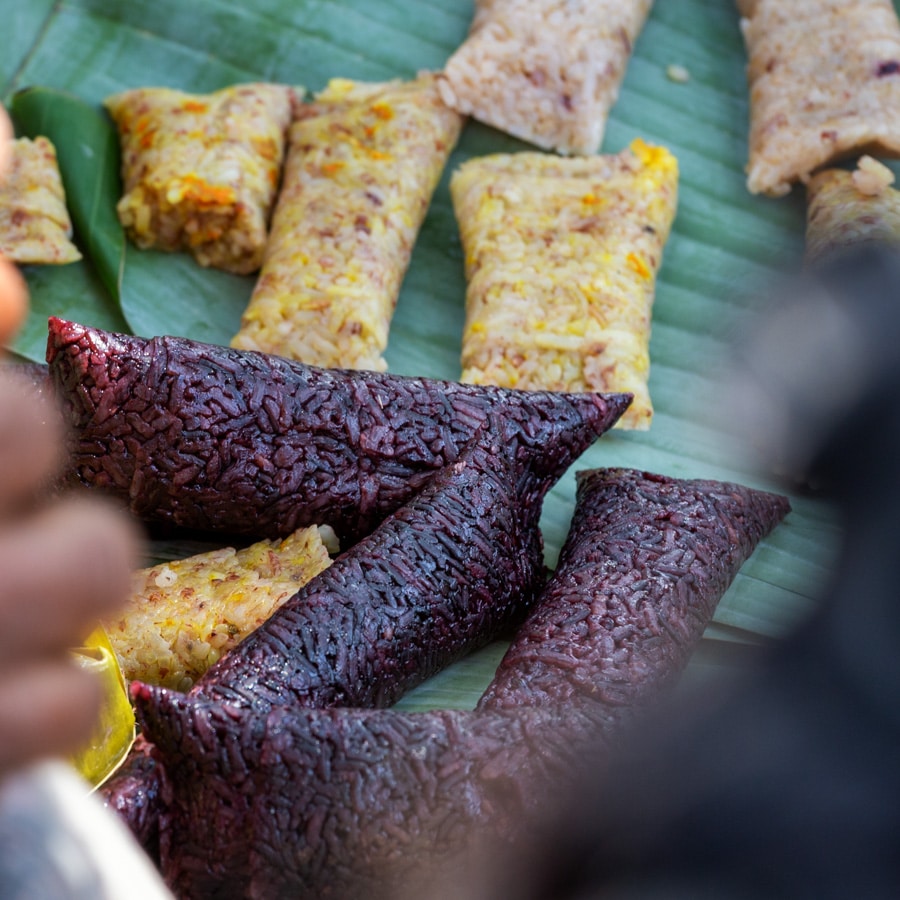
In a hidden corner out in the fields, food is prepared as an offering to the spirits of nature in accordance with Aluk beliefs.
Meeting a Tominaa…
Tominaa are leaders of the Aluk religion, and we were scheduled to meet and talk to one by the name of Ne’ Yoksi. We had drafted a list of questions for him, but as we sat with him under the rice barn sipping sweet coffee, Lisa only got to ask the first one. Ne’ Yoksi answered with a long, very long monologue. It was interesting to watch him speak very eloquently with expressive gestures, even though I didn’t understand a word. They spoke in the Torajan language.
…or the difficulty of interpretation
Back home we listened to the recording, and Lisa translated everything for me into English. I often had to interrupt him: “Wait, Lisa, that makes no sense!” He would then translate the passage into Bahasa Indonesia. But again, wasn’t that contradicting what Ne’ Yoksi had just explained in a previous passage?
Torajan is an oral culture. In our written cultures, we are used to starting a thought at a specific point and then developing it in coherent, non-contradictory steps to a conclusion. And more often than not, we know our conclusion before we even begin to talk. This is how I write blogs or books. But Ne’ Yoksi seemed rather to talk in circles, trying out thoughts and returning to them with a new shift. Or maybe it could be better described as spiralling toward a conclusion that had yet to be fully formed.
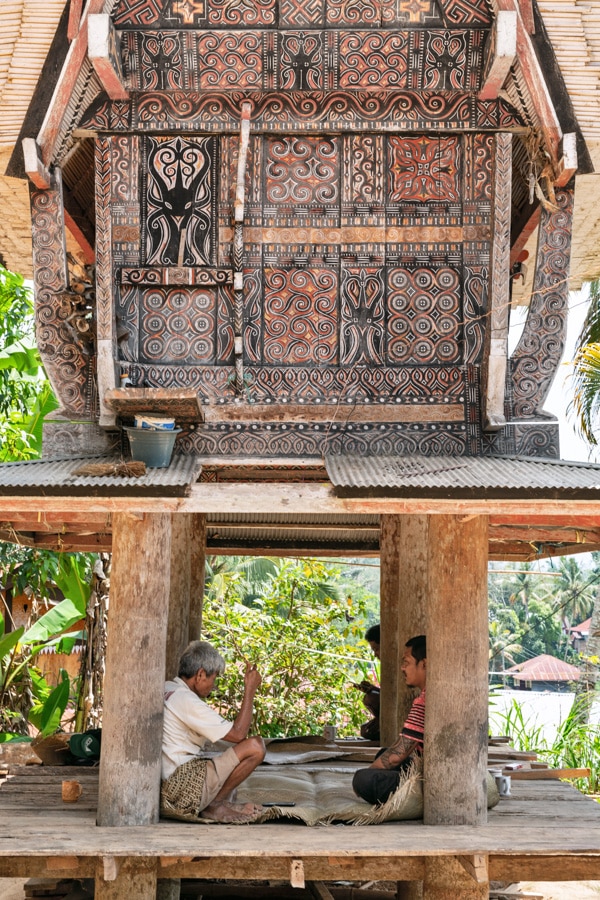
I had to square the circle, so to speak. I wrote a linear interpretation, cross-checking every sentence with Lisa and the recording. It included only what Ne’ Yoksi had actually said, but some things were necessarily left out (as the talk lasted well over an hour) and others were arranged in a different sequence. Only one idea was included that was not verbatim from the Tominaa but was my own conclusion. Yet I didn’t feel at ease at all. Maybe squaring the circle would result in a gross misinterpretation after all.
There was only one way to find out. So a week later, we sat under the rice barn again, and Lisa read my text to Ne’ Yoksi. We had re-translated it into Bahasa Indonesia the night before. My anxiety subsided as I saw the Tominaa nodding several times. And on one occasion, he even underscored his approval with an unmistakable gesture. Later, I asked Lisa which passage it was that had earned his praise. It was the one conclusion I had inserted into his speech.
Note
Toraja Culture is a joint creation by my Torajan co-author Lisa Soba Palloan and me.
It is available at various places in Rantepao. e.g. the Heritage Hotel, Pia’s Poppies Hotel (my favorit place to stay), the Kaana Toraya Coffe Shop or at the lovely Loka Banne Bookshop. You may also ask the owner of your homestay or any local guide.
In Germany you can order the book online from Dr. Götze Land&Karte, Hamburg.
Finally you can ask me to send you a copy.
A glimpse into the book…
Latest Blogs
- Belfast Unseen – a Photographers’ City Walk
- Toraja – the culture behind life and death
- Story of Nutmeg and the Banda Islands
- Jakarta's Old Town (Kota Tua)
- Slums of Jakarta

Leave a reply
Hi Collin,
We just returned from a trip in Sulawesi, where we visited the Toraya area (Lisa was our guide there). Is it possible to send the book to our home? The shop Dr. Götze Land&Karte does not have any stock left.
Please let us know how we can pay.
With kind regards,,
Paula Bennis
Waarderstraat 184
2729KL Zoetermeer
Netherlands
Thanks for your interest, Paul. I will contact you by email.